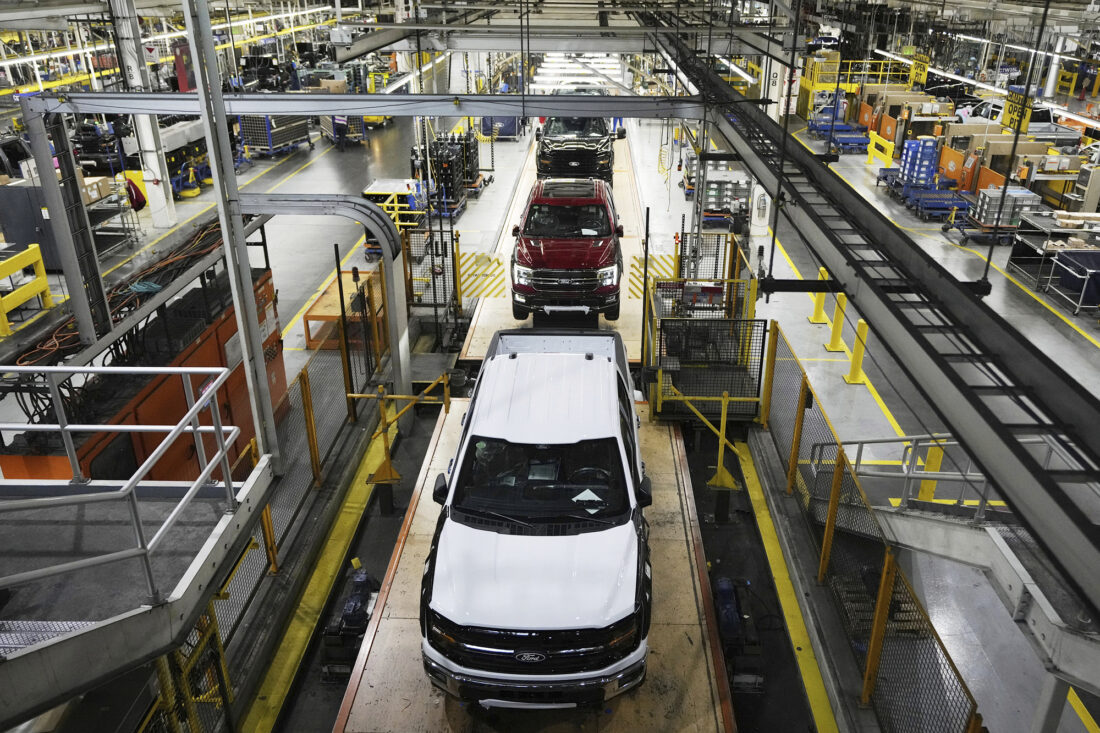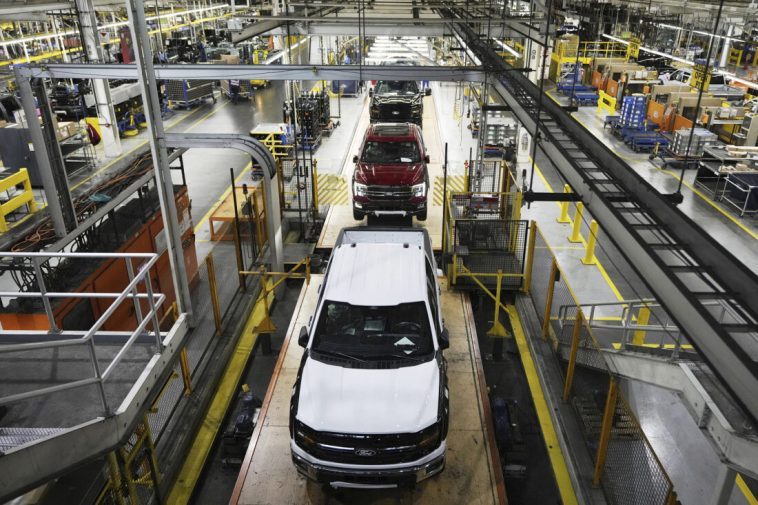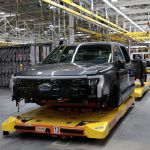
Michigan’s Automotive Landscape in a Time of Trade Tensions
The roar of assembly lines, the steady hum of factories, and the pride of America’s automotive legacy all come together in Michigan—a state whose manufacturing sector forms the backbone of its economy. Recently, discussions around federal tariff policies and their tricky parts on the domestic auto industry have taken center stage. With debates swirling about trade frameworks and import taxes, Michigan’s auto industry finds itself at the crossroads of politics and economics. In this editorial, we take a closer look at the unfolding narrative where high-level meetings, political posturing, and the real-world effects of policy decisions converge.
Whitmer’s Private Appeal: A Candid Conversation in the Oval Office
In an eye-opening private session at the Oval Office, Michigan Gov. Gretchen Whitmer presented her case with a detailed slide deck, aiming to drive home the potential economic blowback from tariffs. Here was a leader willing to poke around in the fine points of trade policy, making a direct appeal to President Donald Trump—a man who is known for his brash, public statements—about the inevitable repercussions of his tariff strategy. Whitmer’s meeting was not a flashy, public spectacle, but rather a behind-closed-doors dialogue that underscored the tension between federal policy and state economic needs.
It is important to note that Whitmer’s approach was both methodical and personal. In a climate full of problems and outright political posturing, her decision to take a closer look at the numbers—such as the $23.2 billion in investment spurred by trade with neighboring countries—illustrates the real stakes involved. She emphasized how cuts in federal support or changes in trade rules could hurt more than just corporate balance sheets: they could also threaten nearly 600,000 manufacturing jobs across Michigan. This meeting, loaded with both subtle details and obvious economic concerns, shines a light on the need for policy that understands the everyday reality of Michigan’s auto-making towns.
The Real Effects of Tariffs on America’s Auto Suppliers
The auto industry is no stranger to tough market conditions, but the additional burden of high tariffs has introduced another set of tangled issues. Recent tariff rules have imposed a 50% tax on steel and aluminum, a 30% rate on parts from China, and even a top rate of 25% on some goods coming from Canada and Mexico. These percentages might seem like mere numbers on a page, but for companies like Ford, General Motors, and Stellantis—who operate across 50 factories in Michigan—the impact is very real.
When working through these trade challenges, companies have reported:
- Factory job losses that ripple through local communities
- Lower overall profits that challenge reinvestment in domestic facilities
- Increasing production costs that may lead to higher vehicle prices
- Supply chain disruptions affecting both small parts suppliers and large manufacturers
For example, in just one quarter, Ford reported nearly $800 million in expenses related to tariff costs, while General Motors announced a staggering $1.1 billion increase in their import tax burden. These figures are more than just financial data—they represent the nerve-racking reality for workers, suppliers, and communities who depend on this industry for their livelihoods.
Weighing Political Rhetoric Against Economic Realities
It’s not just about dollars and cents. The economic impact is intertwined with political rhetoric—a combination that makes the situation even more intimidating. Politicians and trade negotiators have often portrayed tariffs as a shortcut to reviving American manufacturing, yet the practical effects can be full of problems for companies entrenched in global supply chains.
For many in Michigan, the promise of job creation and the allure of protecting national industry are appealing. However, many auto executives have repeatedly warned that these policies could backfire by making their products less competitive on the international stage. With tariffs on foreign-made vehicles and parts that are lower than those imposed domestically, the playing field becomes uneven, leaving American manufacturers to compete against foreign rivals who only face a 15% tax.
This discrepancy has left many industry leaders feeling that the current trade framework is not just a matter of policy but a balancing act between political theater and the everyday realities of production. As these debates continue, one thing remains clear: forcing domestic manufacturers to shoulder an extra financial load could have far-reaching consequences not only for the companies but also for workers and consumers in Michigan and beyond.
Sorting Out Federal Trade Frameworks: Key Considerations for Growth
As discussions about tariffs persist, it is essential to get into the detail of federal trade frameworks that shape the business environment. The current set of executive orders and trade frameworks introduced by the administration are attempting to steer through significant economic changes. Among the most challenging pieces are the proposals to impose even steeper tariffs on computer chips—a critical component for today’s cars and trucks.
In order to figure a path that both protects domestic production and remains competitive internationally, policymakers must take a balanced approach. Here is a concise comparison of the current tariff landscape:
| Product Category | Tariff Rate | Foreign Competitors’ Rate |
|---|---|---|
| Steel & Aluminum | 50% | 15% (negotiated by Trump in recent talks) |
| Auto Parts from China | 30% | Varies by country, often lower |
| Goods from Canada/Mexico | Up to 25% | 15% |
This table encapsulates the stark discrepancies that have industry insiders worried. The fine points of how these numbers translate into real-world challenges are many: from increased costs to potential job losses, not to mention the added financial hurdles that small suppliers face in an already complicated market.
Understanding the Greater Economic Climate for Michigan Manufacturing
Michigan’s economy is tightly interwoven with the fortunes of its auto industry. Beyond the assembly lines and factory floors, the state’s economic health relies on a ripple effect that touches retail, education, housing, and community services. When major manufacturers like General Motors, Ford, and Stellantis see profits squeezed and costs raised, there can be knock-on effects that go far beyond the factory perimeter.
Consider the following impacts:
- Job Security: With Michigan having lost 7,500 manufacturing jobs since the tariffs were implemented, the pressure on the local workforce is palpable.
- Community Well-Being: Local suppliers and service providers that depend on the steady demand from auto companies face the threat of reduced business or even closure.
- Long-Term Growth: The shift in investment focus from domestic facilities to potential restructuring or overseas alternatives could undermine the state’s longstanding industrial legacy.
For the State of Michigan and its auto workers, these are more than just economic statistics; they affect everyday lives. Families who have built their futures around manufacturing are now contending with the overwhelming possibilities of change. The political dialogue must, therefore, reflect these human realities and not just abstract economic models.
Working Through Political Tensions: Michigan Leadership in Washington
Political leaders in Michigan face an especially tricky set of challenges while trying to promote local interests in Washington. Gov. Whitmer’s private meeting with President Trump illustrates this delicate dance—a situation fraught with potential pitfalls yet crucial for protecting state interests. Her approach, which involved a mix of detailed data and personal testimony, was an effort to find her way through the tangled issues of federal trade policy.
Here are some key strategies that Michigan leadership has employed in dealing with these federal trade matters:
- Direct Engagement: By securing multiple private meetings, state leaders are ensuring that their voices are heard away from the glare of the public stage.
- Data-Driven Conversations: Detailed presentations, replete with numbers and case studies, help underline the real-world consequences of tariff policies.
- Balancing Act: Leaders must carefully balance the political need to oppose certain federal measures while still recognizing the long-term trade benefits that come with open global markets.
This balancing act is full of problematic twists and turns. On one hand, there is the pressure to protect domestic jobs and industry, and on the other, the potential alienation of political allies whose budgets and constituents may benefit from a more open, tariff-friendly marketplace. The fine details of these discussions often come down to subtle differences in how one weighs immediate hardships against long-term gains.
The Road Ahead for Michigan’s Auto Industry in a Tariff-Impacted Economy
Looking forward, the future of Michigan’s auto industry hangs in a delicate balance. The current policies leave many companies facing a nerve-racking choice: adjust production strategies or risk becoming less competitive on a global stage. Investors, workers, and local communities are all watching closely, aware that decisions made in Washington could have a lasting effect on the industrial heartland.
The road ahead could include:
- Innovative Adaptations: Companies might invest in new technologies or shift strategies to mitigate the impact of high tariffs, such as focusing on electric vehicles and smart manufacturing solutions.
- Policy Revisions: State leaders are expected to continue advocating for revisions in federal trade policies that better reflect the needs of domestic manufacturing.
- Increased Investment in Workforce Training: Preparing workers for new challenges and technologies could be a key focus, ensuring that the local labor force remains competitive in the global market.
- Expansion of Local Supply Chains: Strengthening domestic supply networks might help counterbalance the negative effects of steep import taxes and create a more resilient economic infrastructure.
Each of these paths has its own set of intimidating and tangled issues. A forward-thinking strategy will need to address not only the immediate financial constraints imposed by tariffs, but also the broader implications for technology, innovation, and job security in Michigan. In this environment, every stakeholder—from factory managers to local government officials—must work together to figure a path that protects both current interests and future growth.
Political Rhetoric Versus Ground-Level Realities: A Comparative Analysis
When comparing political rhetoric with the ground-level impacts of trade policies, there is a clear disconnect between lofty promises and the often overwhelming financial and operational challenges faced by automakers. Politically, tariffs have been touted as a means to “restore American dominance” in manufacturing. Meanwhile, industry data suggests that these measures could burden companies with extra costs that cumulatively amount to billions of dollars—funds that might have otherwise been reinvested in innovation, new factories, or workforce expansion.
A closer look at this contrast reveals several important insights:
| Aspect | Political Promise | Ground-Level Reality |
|---|---|---|
| Tariff Policy | Revitalizing American manufacturing and protecting jobs | Extra costs that force companies to cut corners or delay investments |
| Economic Growth | Attracting billions in commitment and investment | Short-term profit squeezes and longer-term uncertainty |
| Competitiveness | Restoring auto industry dominance | Uneven playing fields that disadvantage domestic production against lower-tariff competitors |
This comparison highlights the challenging bits that policymakers must address. The slight differences between policy intent and industry outcome reveal the hidden complexities in formulating trade rules that are truly beneficial. While the political narrative may focus on numbers and grand visions, the everyday reality is that these policies have a cascading effect on jobs, wages, and even the cultural identity of a state steeped in manufacturing tradition.
Technology and Innovation: The Next Frontier for Domestic Auto Production
Looking beyond the immediate challenges posed by tariffs, there is a growing consensus that technology and innovation will be the super important factors in shaping the future of Michigan’s auto industry. With the rise of electric vehicles (EVs) and smart manufacturing, the industry is at the cusp of a technological revolution that could redefine American production systems.
Key elements driving this transformation include:
- Research and Development: Increased investments in EV technology could reduce the reliance on traditional parts that face high tariffs, thereby lowering overall costs.
- Automation and Robotics: Implementing advanced manufacturing techniques can help offset rising production expenses by boosting efficiency and reducing waste.
- Supply Chain Integration: Strengthening connections between domestic suppliers and manufacturers can create a more resilient network that responds faster to both domestic and international market shifts.
- Training and Education: Upskilling the workforce to handle new technologies is essential. Local governments and companies must collaborate to ensure that workers can transition smoothly into roles that require new technical proficiencies.
While these innovative strategies may help companies better manage their current challenges, they also require an upfront investment and a willingness to adapt to a rapidly changing global market. The decision to invest in the future of technology rather than simply absorbing tariff-related costs marks a significant turning point—a shift from short-term fixes to long-term strategy.
Lessons Learned: Balancing State Interests and Federal Initiatives
The dialogue between state leaders and federal policymakers represents a microcosm of the larger debate on the future of American manufacturing. Michigan’s experience, particularly through Gov. Whitmer’s efforts, offers several lessons for how local interests can be represented more effectively:
- Direct, Data-Driven Communication: By taking a closer look at the numbers, state leaders can more effectively argue their case, demonstrating exactly how policies translate into real-world challenges.
- Private Consultations: Closely held meetings, free from public pressure, sometimes allow for more honest and constructive exchanges between stakeholders on both sides of the aisle.
- Balancing Short-Term Pain with Long-Term Gain: While tariff policies might offer some short-term political benefits, their long-term impact on competitiveness and innovation can be counterproductive if not carefully managed.
- Collaborative Partnerships: Encouraging partnerships between the public sector, private companies, and academic institutions can spur advancements in technology and create new opportunities for workers and communities alike.
These lessons underline the importance of finding common ground in policy discussions—one that appreciates the nerve-racking financial details and the human cost behind every policy decision. The dialogue is ongoing, and while the political debate may be on edge, the collaborative efforts to safeguard Michigan’s future remain super important for the state’s well-being.
Finding a Path Forward: The Intersection of Politics, Trade, and Innovation
As the debates around tariff policies and economic strategy continue to evolve, it is clear that there is no simple fix for the challenges facing Michigan’s auto industry. Instead, the solution lies in a strategic approach that accounts for both the immediate financial pressures and the long-term need for technological innovation and workforce development.
Key considerations for a successful path forward include:
- Policy Adjustments: Direct engagement between state leaders and federal policymakers will be essential to reform outdated measures that impose excessive costs on domestic manufacturers.
- Investment in Technology: Prioritizing research and development, especially in electric and smart vehicle technologies, can help offset the negative effects of tariffs by reducing reliance on expensive, imported components.
- Workforce Development: Implementing robust training programs to equip workers with skills for the future of manufacturing will be critical in ensuring that Michigan’s labor force remains competitive.
- Enhanced Domestic Supply Chains: Strengthening local networks can lead to more resilient production systems that are better prepared to face global economic shifts.
The intersection of these elements reflects a broader vision for the future—a future where Michigan’s auto sector not only survives but thrives in an increasingly complicated and competitive global market. This vision calls for pragmatic policy adjustments, targeted investments in innovation, and a commitment to nurturing the next generation of manufacturing talent.
Conclusion: Steering Through the Twists and Turns of Trade and Technology
Michigan’s ongoing struggle with tariff policies and federal trade frameworks is a vivid reminder of the many twists and turns in today’s economic landscape. Gov. Whitmer’s private dialogue with President Trump captures the essence of a state leader’s responsibility to protect and advocate for her people while showing a willingness to engage directly with even the most intimidating political figures.
As we figure a path through these tangled issues, it is apparent that the auto industry’s challenges are not solely defined by high-level political rhetoric; they are also shaped by the real-world implications for jobs, local communities, and the future of innovation. The debates around tariffs, import taxes, and trade policies might often seem overwhelming, but they also offer a crucial opportunity for stakeholders to reimagine a future where American manufacturing retains its competitive edge while fostering economic growth.
Ultimately, the key to success will lie in finding a balance—one that embraces the necessary technical changes of a globalized economy while protecting the essential interests of domestic industry. Michigan, with its long-standing legacy in auto manufacturing, stands as a symbol of both American ingenuity and the challenges of modern economic policy. The dialogue must continue, informed by a clear-eyed understanding of the fine details, small distinctions, and the subtle parts that make up the intricate tapestry of today’s auto industry.
In the end, as the state moves forward, policymakers, business leaders, and community members must all work together to steer through these confusing bits and nerve-racking challenges. The journey ahead is not without its obstacles, but with a firm commitment to innovation, a pragmatic approach to policy, and an unwavering focus on the human impact of these decisions, Michigan can chart a course toward a vibrant, sustainable future for its automotive sector—a future that remains a linchpin of not only state prosperity but also national confidence in American manufacturing.
This opinion editorial invites readers to consider the high stakes involved as political agendas and economic imperatives collide, and to recognize that while the road can be full of problems and off-putting twists, it is only by making thoughtful, data-driven choices that we can ensure a stable and prosperous future for our communities and our industry.
Originally Post From https://www.gmtoday.com/business/whitmer-told-trump-in-private-that-michigan-auto-jobs-depend-on-a-tariff-change-of/article_34182819-1474-4853-a88a-31b684ca9c36.html
Read more about this topic at
Trump tariffs kick in at highest rates since the Great …
Trade Tensions

